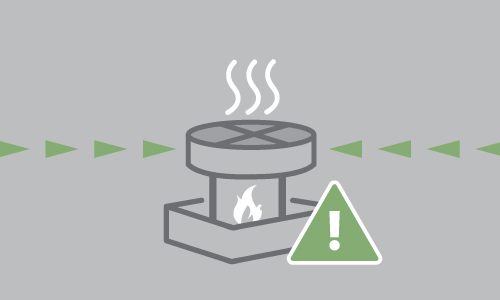No matter the industry, manufacturing is a combination of sciences (and scientists) working together to convert raw materials to products. Everything is measured and controlled, and if something deviates from the norm, the inputs are modified to achieve maximum efficiency, minimal variability, and optimal cost.
Pollution control is also a science. However, if you ignore the science of pollution control, you’re likely to need the help of lawyers and public relations professionals to protect your company from the onslaught of fines, lawsuits, and bad press that could hit your company if you violate regulations or break the law.
Following our recent blog exploring the three T’s of combustion (Time, Temperature, and Turbulence), and their role in VOC abatement, we would today like to take a look at another important factor in the science of pollution control and the VOC and HAP abatement process: Flammability Limits, and how they pertain to VOC Abatement system design with regards to safety and efficiency.
Flammability: The Balance of Safety and Efficiency
Thermal oxidation, or thermal incineration, is the process of oxidizing combustible materials by raising their temperature above the autoignition point in the presence of oxygen and maintaining it at a high temperature for sufficient time to complete combustion to carbon dioxide and water. While the goal of oxidation is to destroy a VOC through incineration, this needs to be well controlled in order to minimize any risk prior to and during the incineration process.
The Basics of Flammability
In controlling the process, one of the critical design considerations is that of flammability, the lowest and highest concentrations (in percentages) at which a compound will combust. VOCs and HAPs are flammable within a specific range—the Lower Explosive Limit (LEL) and the Upper Explosive Limit (UEL), with additional variance in violence of explosion, energy generated, and more.
Different compounds are flammable at different concentrations, with LELs for compounds such as turpentine, diborane, xylene, and styrene being flammable in concentrations lower than 1.1%.
Designing a VOC Abatement Solution with Regards to Explosive Limits
In this, it is necessary to design a VOC/HAP abatement system that can do so safely and efficiently in a controlled environment that maintains maximum concentrations substantially below the lower explosive limit (LEL) of the specific compound(s) being controlled—often at one-fourth of the LEL. In order to achieve this, ambient air is used to dilute the concentrations of compounds so as to prevent any flashback that could occur from exhaust concentrations igniting before they reach the chamber.
The ideal concentration provides cost efficiency and safety during operation. If there is more air than needed to balance the basic stoichiometric combustion equation (CxHy + O2 –> CO2 + H2O), the process is inefficient, increasing the costs associated with the oxidation process. On the other hand, anything exceeding 25% of the LEL presents an unnecessary risk of propagation and damage.
Describing Your Pollution Processes
When working with a consultant in charge of designing your VOC abatement solution, they will document the contents of your current exhaust streams in order to provide a safe input environment and allow for maximum efficiency. As discussed in our VOC abatement specification checklist, it’s important to document your production process, facilities, and expectations—allowing your consultant to plan a solution tailored to your needs.
They will then design an oxidizer with proper controls and protective devices to prevent ignition propagation including flame arrestors, inertion, or LEL/O2 monitoring, depending on outputs, needs, and other factors.
Learn More: The CMM Group VOC Abatement Guide
At The CMM Group, we know the art and science of VOC Abatement, and have designed solutions that not only control pollution, but provide a safe, efficient operating environment and can even put money back in your pocket through energy savings and heat recovery. In this, we have just released a new guide to VOC abatement that shows you the basics of the scientific and legal environment, and discuss your options for efficiently destroying VOCs from your exhaust streams. We welcome you to download the guide here or preview it below.
Looking for even more? Learn how a Regenerative Thermal Oxidizer works here, discover the 12 questions you need to ask when specific your pollution control needs, and learn how to select the right VOC abatement system here.




